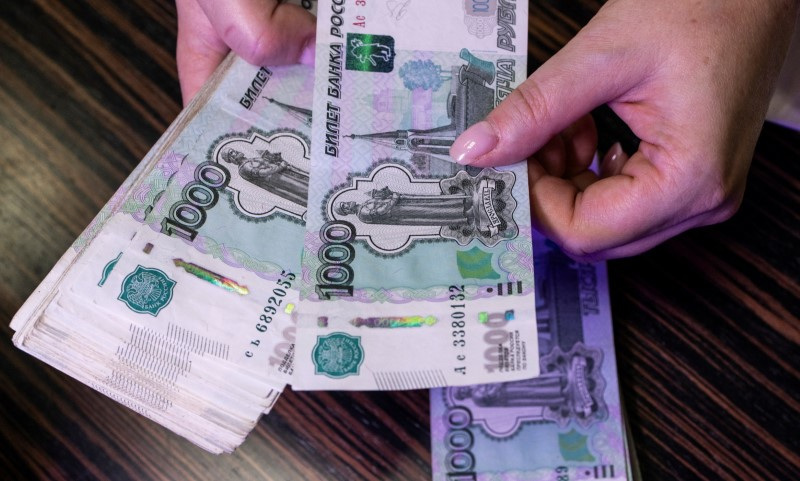MOSCOW (Reuters) – The Russian ruble weakened to a 10-month low against the dollar on Tuesday following Ukraine’s unexpected attack on Russia’s Kursk region a week ago, but later rebounded to its opening level.
At 1500 GMT, the ruble was trading at 90.99 per dollar, according to LSEG data, after falling to 96.60, its lowest level since October 20, 2023. It has lost 6.2% since the start of the attack on August 6.
Trading in major currencies shifted to the over-the-counter (OTC) market, obscuring price data, after Western sanctions were imposed on the Moscow Exchange and its clearing agent, the National Clearing Centre, on June 12.
One-day ruble-dollar futures, traded on the Moscow Exchange and serving as a guide to OTC market rates, fell 0.4% on Tuesday to 89.60. During the previous day’s trading, the futures lost 2.5%.
The central bank’s official exchange rate, calculated using OTC data, was set at 89.93 on Monday, down about 6 percent since the attack began.
The ruble’s weakening against the dollar and the euro continued despite support from high oil prices and increased daily net sales of yuan by the central bank and the finance ministry.
According to an analysis of the OTC market, at 15:00 GMT the ruble weakened by 1.3% to 12.07 against the , which became the most traded foreign currency in Moscow. During trading, the ruble touched 12.11 against the yuan, its lowest level since June 24.

It was down 0.2% to 99.70 against the euro, according to LSEG data. The central bank’s official exchange rate was 96.69 rubles per euro.
a global benchmark for Russia’s top export, fell 1.0% to $81.24 a barrel as markets clocked less risk of a wider war in the Middle East.





